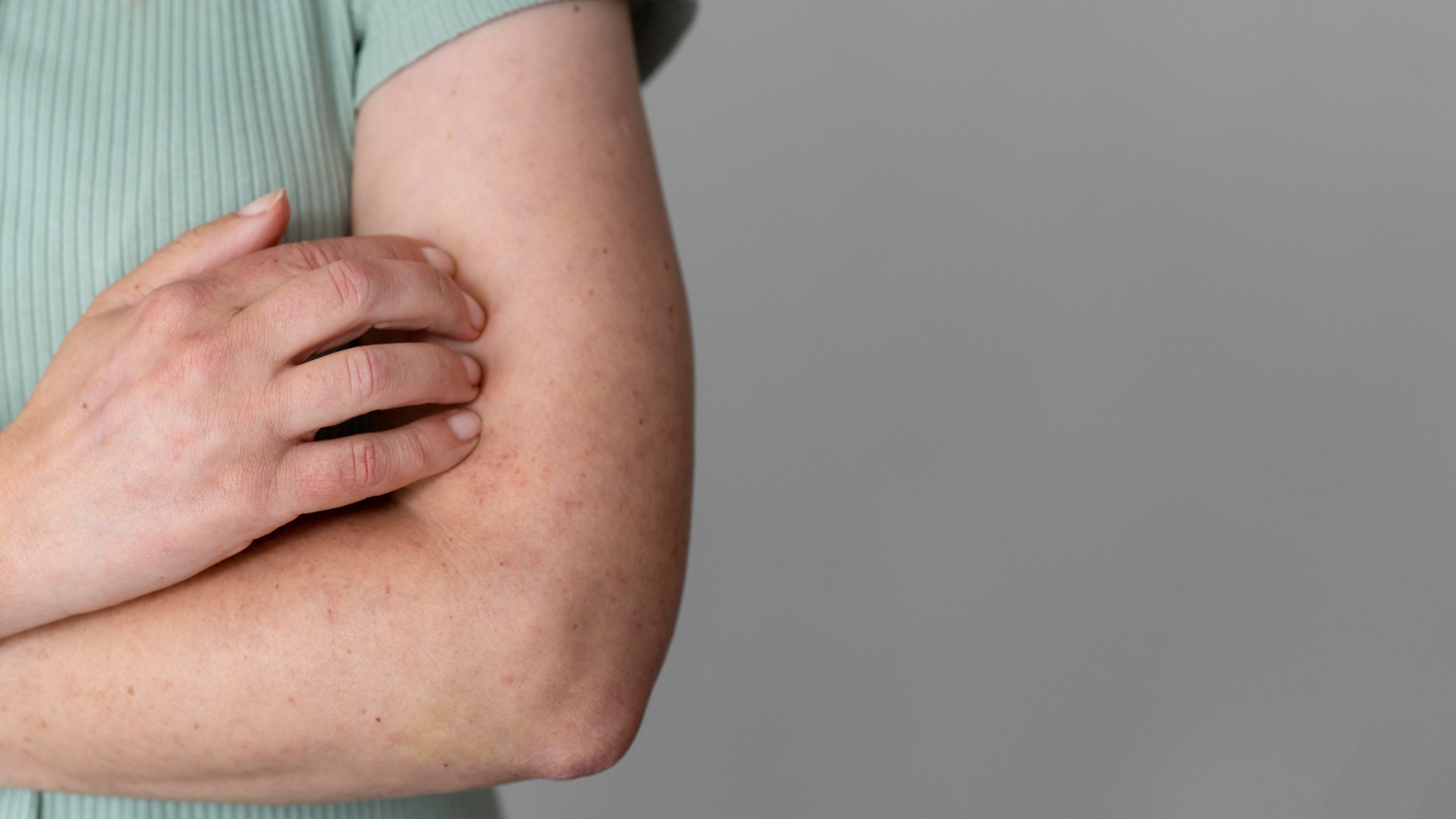BNP Peptide a Culprit in Eczema

For Immediate Release
Researchers from North Carolina State University have pinpointed a particular peptide’s role in activating atopic dermatitis, or eczema. The work could lead to more effective treatments for the condition.
Atopic dermatitis (AD) is a skin condition characterized by itching, irritated and thickened skin at the site of the irritation. The brain natriuretic peptide (BNP) is a peptide, or short chain of amino acids, that is elevated in patients with AD.
“BNP is expressed in sensory neurons, the neurons responsible for conveying sensation to the brain via the spinal cord,” says Santosh Mishra, associate professor of molecular biomedical sciences at NC State and corresponding author of the work. “We know from previous work that BNP helps translate the sensation of itch from the skin to the brain. In this work we wanted to see if BNP was involved in activating AD.”
In a chemically induced mouse model of AD, the researchers saw that mice without BNP did not exhibit the thickened or irritated skin commonly associated with AD, and their itching was reduced compared with control mice who did have BNP.
“The results show that BNP likely plays a role in itch activation,” Mishra says. “We next looked at BNP’s relationship to periostin, to see if we could determine how that activation takes place.”
Periostin is a protein that can interact with sensory neurons in skin to activate itch response. It is produced in skin cells called keratinocytes and fibroblasts. Keratinocytes in turn, have receptors for BNP, which are called NPR1 receptors. When the BNP receptors are activated, periostin is produced and itch can be turned on.
“But the interesting thing here is that the sensory neurons are the activator,” Mishra says. The neuron releases BNP, which activates keratinocytes with the NPR1 receptor, which then release the periostin.
“This work shows that peripheral neurons, not just central neurons, are playing a role in AD – it begins in the sensory neurons, and cascades from there,” Mishra adds. “It also points to some potential therapeutic strategies, such as blocking BNP’s ability to bind to NPR1 receptors in the skin.”
The research appears as a letter to the editor in the Oct. 11 issue of the Journal of Investigative Dermatology. The work was supported by the National Institutes of Health under grant number 1R56AR077692-01. NC State undergraduate student Junho Yu, former NC State undergraduate student Nidha Williams, and NC State postdoctoral research scholar Joshua Wheeler, also contributed to the work.
-peake-
Note to editors: An abstract follows.
“BNP Exerts Inflammation and Peripheral Itch in a Mouse Model of Atopic Dermatitis”
DOI: 10.1016/j.jid.2023.09.273
Authors: Joshua J. Wheeler, Nidha Williams, Junho Yu, Santosh K. Mishra, North Carolina State University
Published: Oct. 11 in Journal of Investigative Dermatology
Abstract:
Atopic dermatitis (AD) is a globally prevalent disease that affects both children and adults, and the incidence of AD is increasing worldwide (Bylund et al, 2020). AD is characterized by dry, inflamed, and itchy skin, but the etiology behind neuroinflammation and itch related to AD skin is only beginning to be understood. The brain natriuretic peptide (BNP), a byproduct of the Nppb gene, is expressed in primary afferent neurons which are known to be responsible for central itch (Mishra and Hoon, 2013), (Pitake et al, 2018, Meng et al, 2018) (Mishra et al, 2020) (Usoskin et al, 2015). Periostin, an extracellular matrix protein is highly expressed in chronic allergic/inflammatory skin diseases and most recently implicated in itch (Hashimoto T et al, 2021). However, the precise role of BNP in peripheral skin-derived inflammation and itch remains unclear. Here we sought to investigate the possible mechanistic relationship between BNP and the extracellular matrix protein periostin in neurogenic inflammation and itch using BNP knockout (KO) mice. The current study aimed 1) to examine whether BNP causes peripheral skin inflammation and itch; and 2) to determine if BNP-induced release of periostin (and perhaps additional cytokines) is related to inflammation and itch.


